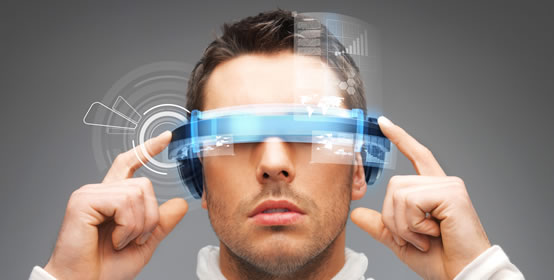
Virtual reality (VR) has made remarkable strides in recent years, moving from a niche technology to a mainstream tool with applications across industries. As we enter 2025, the trajectory of VR continues to evolve, driven by advancements in hardware, software, and user experiences. VR has become an essential part of our technological landscape, shaping how we work, learn, and connect.
Virtual reality’s history is a testament to the resilience of innovation. Initially seen as a futuristic novelty, VR gained traction in the 2010s with the release of devices like the Oculus Rift and HTC Vive. These early headsets set the stage for a new era of immersive experiences, despite limitations such as high costs and technical constraints.
Over the years, improvements in display resolution, motion tracking, and user interfaces have made VR more accessible. The pandemic further accelerated adoption, as businesses, educators, and consumers sought virtual solutions for remote interaction. By 2023, VR was firmly entrenched in industries like gaming, healthcare, real estate, and training.
As we assess the landscape in 2025, several key trends stand out, reflecting both the progress and challenges of VR technology.
1. Ultra-Realistic Graphics and Haptics
One of the most significant advancements in VR is the push toward ultra-realistic graphics and tactile feedback. Modern VR systems now feature displays with resolutions exceeding 8K, delivering unparalleled visual fidelity. Companies like NVIDIA and AMD have developed GPUs capable of rendering photorealistic environments in real time, while advancements in foveated rendering ensure efficient performance.
Haptic technology has also matured, allowing users to feel textures, temperatures, and even resistance in virtual environments. Devices like haptic gloves and suits are now commonplace, enabling deeper immersion in industries such as training simulations and virtual commerce.
2. Enterprise Adoption
The enterprise sector remains a key driver of VR adoption. Companies use VR for training, product design, and remote collaboration. In healthcare, VR is employed for surgical simulations, pain management, and mental health therapy. Retailers are leveraging VR to create virtual showrooms, allowing customers to experience products before purchase.
With the advent of the metaverse, businesses are exploring VR as a platform for virtual offices and events. These environments offer a sense of presence and interactivity that surpasses traditional video conferencing.
3. The Rise of the Metaverse
The metaverse, a persistent and shared virtual space, continues to be a buzzword in 2025. Platforms like Meta’s Horizon Worlds and Decentraland have evolved, offering robust ecosystems for socializing, working, and playing. Interoperability remains a challenge, but efforts are underway to standardize protocols, enabling seamless movement between virtual worlds.
The metaverse has also sparked interest in virtual economies. Blockchain technology underpins many of these ecosystems, with NFTs (non-fungible tokens) serving as the foundation for virtual goods and real estate.
4. Improved Accessibility
Accessibility has been a barrier to VR adoption, but 2025 has seen significant improvements. Lightweight, standalone headsets like the Meta Quest 3 and Apple Vision Pro have eliminated the need for tethered setups, making VR more user-friendly. These devices are also more affordable, with entry-level models priced under $300.
Innovations in user interfaces, such as voice commands and eye tracking, have further reduced the learning curve. Additionally, companies are prioritizing inclusivity by designing experiences that cater to users with disabilities.
5. 5G and Edge Computing
The rollout of 5G networks and advancements in edge computing have transformed VR experiences. Low-latency connections enable seamless streaming of high-quality content, while edge computing reduces the processing load on devices. This combination has made cloud-based VR a reality, allowing users to access sophisticated applications without requiring high-end hardware.
6. Educational Applications
Education remains one of the most promising sectors for VR. Virtual classrooms provide immersive learning experiences, enabling students to explore historical landmarks, conduct scientific experiments, and practice real-world skills in a safe environment. Institutions are also using VR to train professionals in fields such as medicine, aviation, and engineering.
7. Healthcare Innovations
Healthcare applications of VR have expanded significantly. Virtual reality is now a critical tool for physical therapy, where patients perform exercises in engaging virtual environments. VR-based mental health treatments, such as exposure therapy and mindfulness training, have proven effective for conditions like PTSD and anxiety.
In 2025, VR is also aiding in medical education. Students can practice surgeries on virtual patients, reducing the risk of errors when transitioning to real-life scenarios.
8. Sustainability in VR Development
As the tech industry grapples with environmental concerns, sustainability has become a focal point in VR development. Manufacturers are exploring eco-friendly materials for headsets, and cloud providers are adopting renewable energy sources to power VR applications. These efforts align with broader goals to reduce the carbon footprint of technology.
While the current trends paint an exciting picture, the future of VR holds even greater promise. Here are some predictions for what lies ahead:
Despite its potential, VR faces several challenges that must be addressed to ensure sustained growth:
Virtual reality in 2025 is a dynamic and rapidly evolving field. With advancements in technology, growing adoption across industries, and the emergence of the metaverse, VR is poised to redefine how we interact with the digital world. However, realizing its full potential will require addressing challenges and ensuring that VR remains accessible, ethical, and inclusive. The possibilities for VR are as vast as they are exciting.